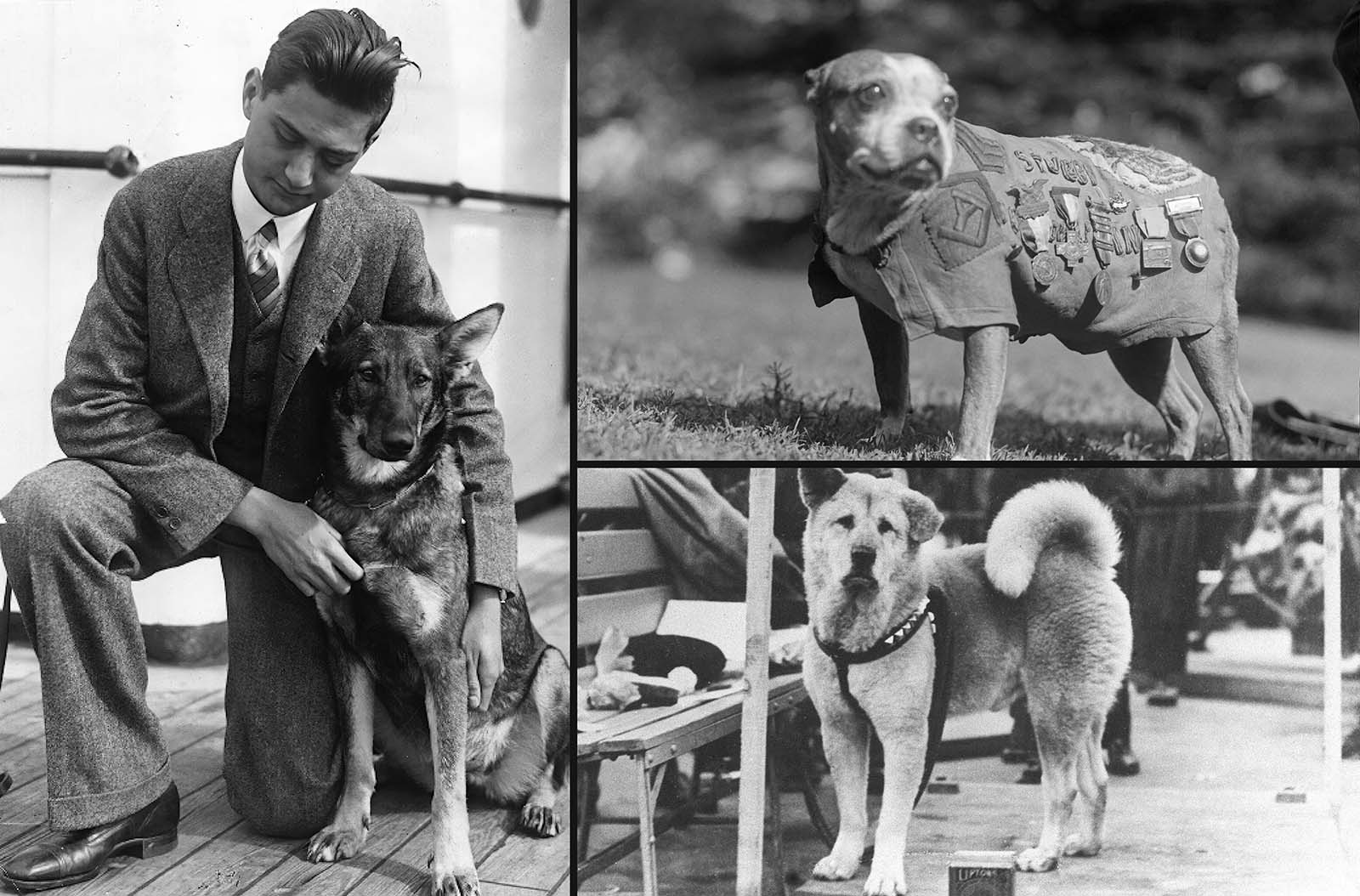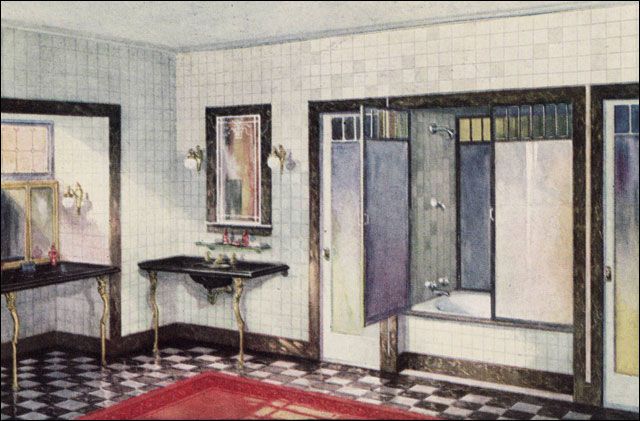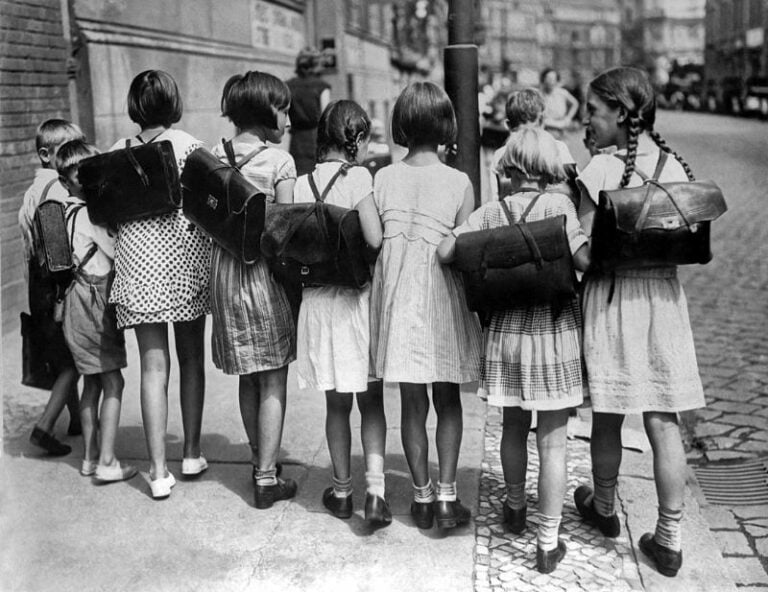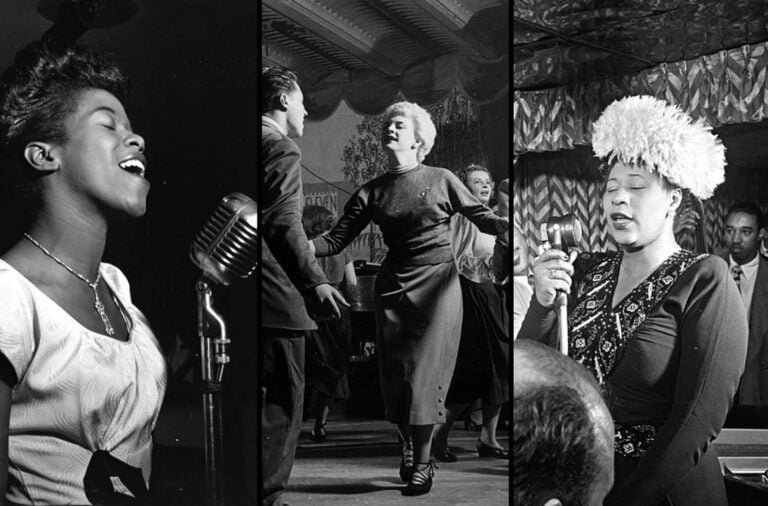Famous Dogs and Their Inspiring Stories: Touching Tales of Man’s Best Friend
Check out these amazing stories of dogs who’ve left their mark on history!
From a brave English Pointer in World War II to a trusty Newfoundland on the Lewis and Clark adventure, these pups have become legendary.
Ever heard of Balto? He’s the sled dog who helped rescue Nome, Alaska, during a big illness outbreak.
Then there’s Zanjeer, the bomb-sniffing dog from India, who rocked it during the 1993 Mumbai attacks. Judy and Sergeant Stubby are also big names for their bravery in wars.
And don’t forget about Greyfriars Bobby and Hachikō, famous for sticking by their owners no matter what.
You gotta read about these cool canines, like the real Toto from The Wizard of Oz and Buddy, the very first American seeing eye dog.
These stories show just how strong the bond between humans and their furry pals can be.
Balto: The Legendary Dog Hero Who Rescued a Whole Town
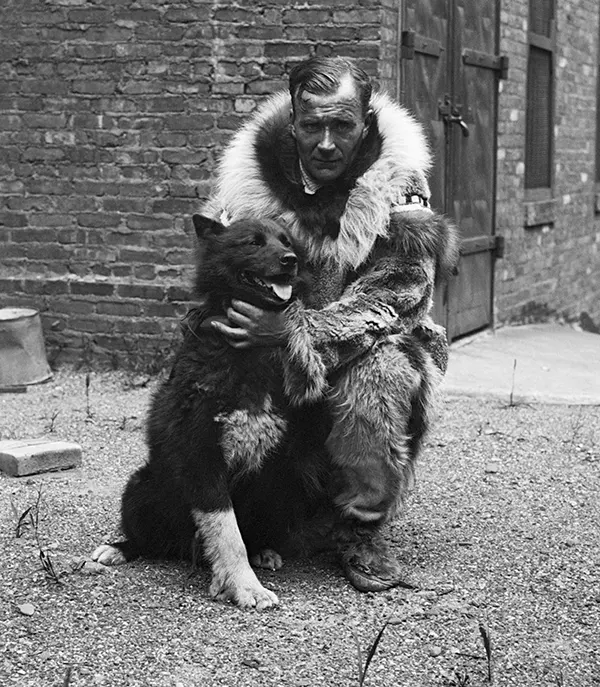
Balto, the famous sled dog, was pretty small, only 45 pounds, and he was probably a mix of Siberian Husky, Malamute, and wolf.
He became a big deal in January 1925 when Nome, Alaska, had a serious diphtheria outbreak. Because of the harsh Arctic winter, the city was cut off from the outside world, and the only way to get medicine there was by using dog sleds. Balto was the hero who made it happen.
To get the life-saving serum from Fairbanks to Nome, they set up a relay of sled dog teams, covering a tough 674-mile trip.
It was no walk in the park. They had to deal with temperatures as low as minus 30 degrees Fahrenheit and fierce winds. But Balto was there, playing a vital part.
In the last leg, a 55-mile stretch, things got really tough. Balto had to take charge because his driver was nearly frozen and couldn’t see. But they made it! On February 2, 1925, Balto rolled into Nome with the serum, saving the day.

When George Kimble, a businessman from Cleveland, visited Los Angeles in February 1927, he stumbled upon Balto and his team being shown off in a cheap museum for just a dime.
Seeing the sorry state of the animals and how they were being treated, Kimble wasn’t having any of it. He haggled and ended up buying the dogs for $2,000.
On March 19, the dogs arrived in Cleveland to a huge welcome. They were greeted with a parade and treated like heroes. Eventually, they found a home at Brookside Park Zoo.

Balto may have left us on March 14, 1933, but his story isn’t over. You can still catch a glimpse of him at the Cleveland Museum of Natural History, where his preserved body is on display, keeping his memory alive and inspiring others.
And if you’re ever in New York’s Central Park, look out for the bronze statue of Balto, made by sculptor Frederick Roth back in 1925. It’s a reminder of his bravery and the special connection between people and animals that he represents.
Greyfriars Bobby: The Most Famous Dog in Scotland

If you ever find yourself wandering around Edinburgh, Scotland, keep an eye out for a little dog statue tucked away at the intersection of Candlemaker Row and George IV Bridge.
That statue is dedicated to Greyfriars Bobby, the most loyal pup in town.
Born around 1855, Bobby was a Skye Terrier who spent his younger days hanging out with a nightwatchman named John Gray, also called “Auld Jock.”
Their friendship was strong, but things took a sad turn in 1858 when Gray died from tuberculosis.
After Gray’s funeral, something remarkable happened. Bobby apparently led the way to Greyfriars Cemetery and stayed put by his friend’s grave. No matter what anyone tried, Bobby wouldn’t budge.
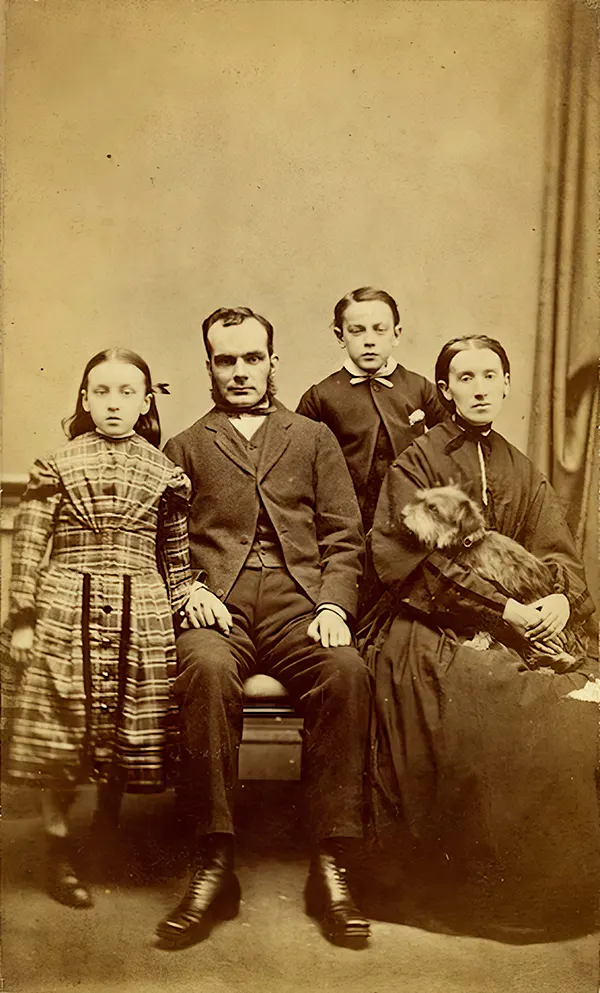
For the next 14 years, Greyfriars Bobby, as he came to be known, kept watch faithfully.
Every day at 1 p.m., Bobby would leave the cemetery briefly to eat, guided by the sound of the guns fired from Edinburgh Castle. But he always hurried back right after.
News of Bobby’s unwavering loyalty spread far and wide, attracting visitors to the cemetery. The people of Edinburgh took care of him, making sure he had a cozy shelter for comfort.

In 1867, a new law required all dogs in the city to be licensed. To honor Greyfriars Bobby’s loyalty, the Lord Provost of Edinburgh gave him a special collar with a brass plate that read: “Greyfriars Bobby – from the Lord Provost, 1867, licensed.”
Even though Bobby was just a pup when his friend passed away, he stuck to his routine faithfully until he himself passed on January 14, 1872.
He was laid to rest near his beloved owner, and the city unveiled a statue in his honor the following year.
Judy: The Loyal Dog That Became Prisoner of War
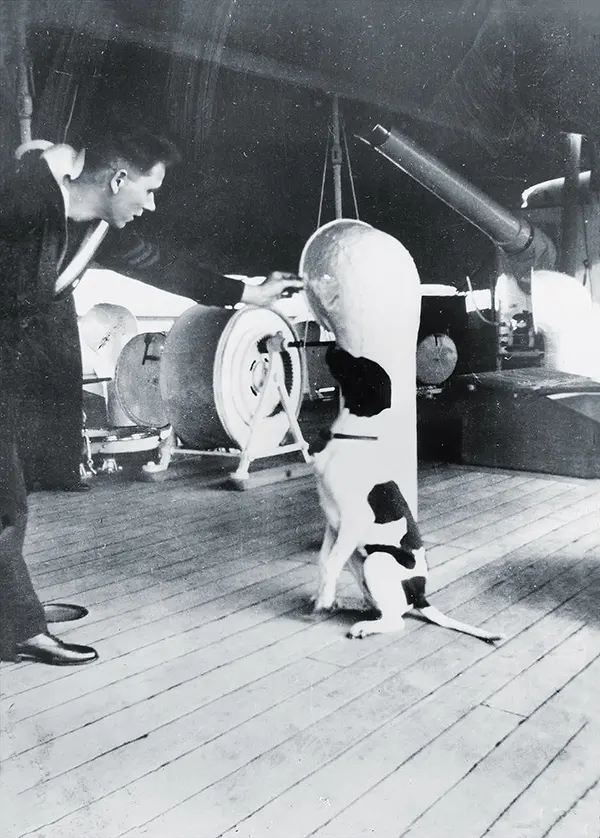
Judy was one heck of a ship’s dog, serving aboard HMS Gnat and Grasshopper in the Yangtze both before and during World War II. She had a talent for sniffing out incoming aircraft.
Things got hairy during the Battle of Singapore when Grasshopper went down. Judy nearly bit the dust herself, but luckily, a crew member managed to save her.
They ended up stranded on a deserted island with just the surviving crew. But Judy, being the smart pup she was, sniffed out a water source, which ended up saving their hides.
After going through a grueling 200-mile journey through the jungle, which even included surviving a crocodile attack, they finally made it. However, they were late and ended up being captured by the Japanese, becoming prisoners of war (POWs).
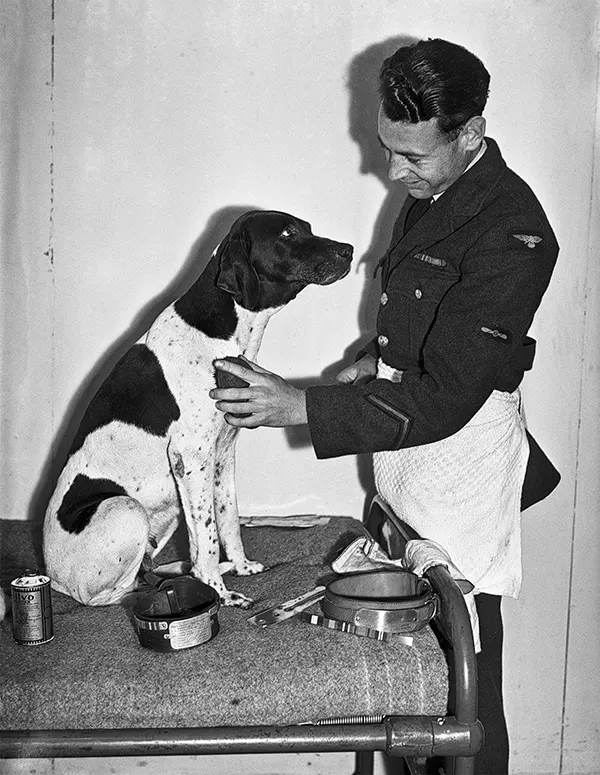
Judy’s story took another turn when she was smuggled into the Gloegoer POW camp in Medan. There, she met Leading Aircraftsman Frank Williams, who would become her lifelong buddy.
Williams managed to persuade the camp Commandant to officially register her as a prisoner of war, giving her the number ’81A Gloegoer Medan’.
Remarkably, Judy became the only dog to be registered as a POW during World War II.
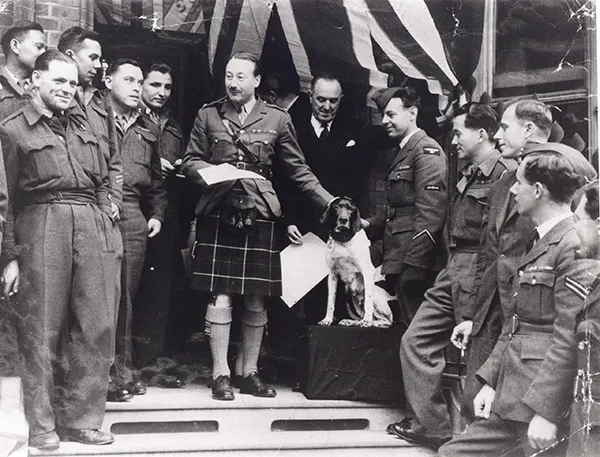
After the war ended in 1945, Judy was finally freed. And in the following year, she received a remarkable honor: the Dickin Medal, often called the “animals’ Victoria Cross,” for her incredible bravery.
Hachiko: The Dog Who Never Stopped Waiting For the Return of His Owner
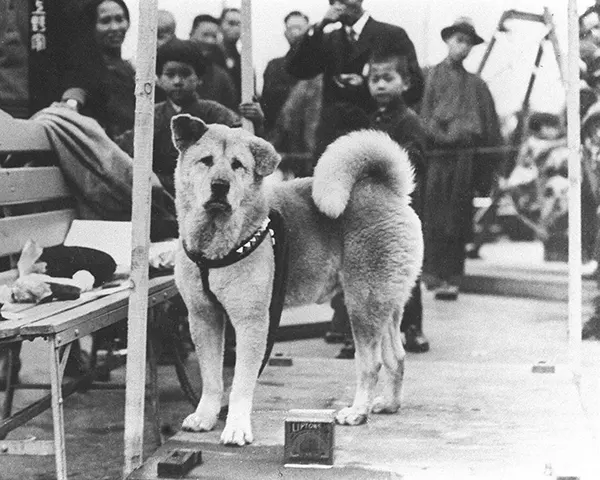
Hachikō, a Japanese Akita dog, is famous for his amazing loyalty to his owner, Hidesaburō Ueno.
He was born on November 10, 1923, near Ōdate, Akita Prefecture, and came to live in Shibuya, Tokyo, with Ueno in 1924.
Ueno, who worked as a professor at Tokyo Imperial University, and Hachikō had a special routine. Every day, Hachikō would wait for Ueno at Shibuya Station after his work was done.
The routine went on until May 21, 1925, when Ueno tragically passed away from a cerebral hemorrhage while at work.
Even though Ueno was gone, Hachikō didn’t give up hope. Every single day, he faithfully returned to Shibuya Station, waiting for his owner to come back.
Hachikō’s unwavering loyalty became a symbol of faithfulness and dedication in Japanese culture.
Even after his passing on March 8, 1935, he’s still cherished and remembered worldwide. You can find tributes to him in statues, movies, and books, keeping his memory alive for generations to come.
Sergeant Stubby: The World War I Canine Hero Who Became a Legend
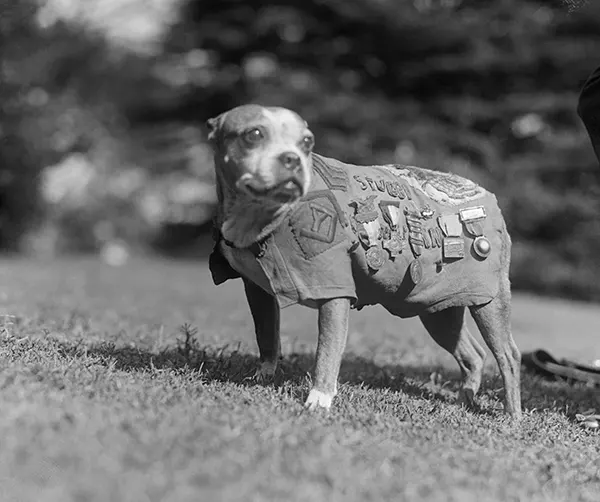
Sergeant Stubby was no ordinary pup. He became the unofficial mascot of the 102nd Infantry Regiment, part of the 26th (Yankee) Division during World War I.
For a solid 18 months, Stubby was right there in the thick of it, taking part in 17 battles and four offensives on the Western Front.
This little guy wasn’t just there for show. Stubby played a vital role in saving his regiment from sneaky mustard gas attacks, finding and comforting the wounded, and even nabbing a German soldier by the seat of his pants until American soldiers showed up.
His remarkable deeds were extensively covered in contemporary American newspapers.
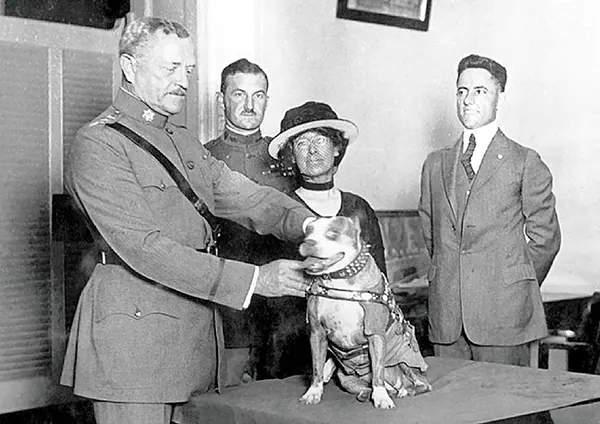
Stubby’s not just any old war dog—he’s celebrated as the most decorated pooch of the Great War. What’s more, he’s the only pup ever to be promoted to the rank of sergeant right in the heat of battle.
Today, you can find his remains honored in the Smithsonian Institution, a fitting tribute to his exceptional service and courage during World War I.
Terry: The Terrier Who Played Toto in The Wizard of Oz
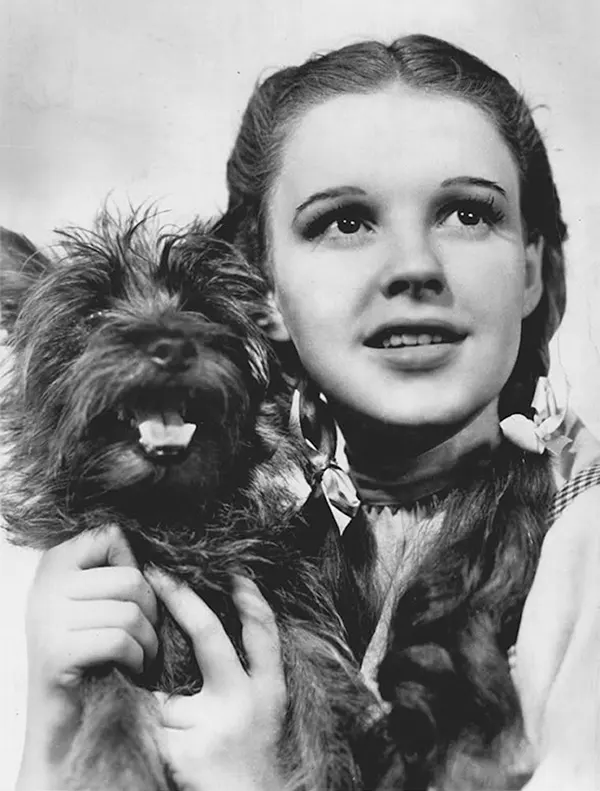
Toto from “The Wizard of Oz” is an absolute legend in cinema history, and the Cairn Terrier who played him, Terry, has quite a story herself.
Born in 1933, Terry had a pretty cool upbringing under the care of Carl Spitz, a German ex-military and police dog trainer who had found his niche in Hollywood.
Terry’s talent caught the eye of none other than the Hollywood icon, Clark Gable. He, along with other big shots in the industry, visited Spitz’s Hollywood Dog Training School, where Terry was shining bright.
Gable was so impressed by Terry’s skills that he played a big role in getting her acting career off the ground.
And boy, did Terry shine! She became a sought-after star, sharing the screen with Hollywood’s finest like Shirley Temple, Spencer Tracy, and Mickey Rooney.
But her big break came in the late 1930s when she snagged the role of Toto in the movie version of L. Frank Baum’s “The Wonderful Wizard of Oz.” She beat out hundreds of other dogs for the part, making it her most iconic role yet.
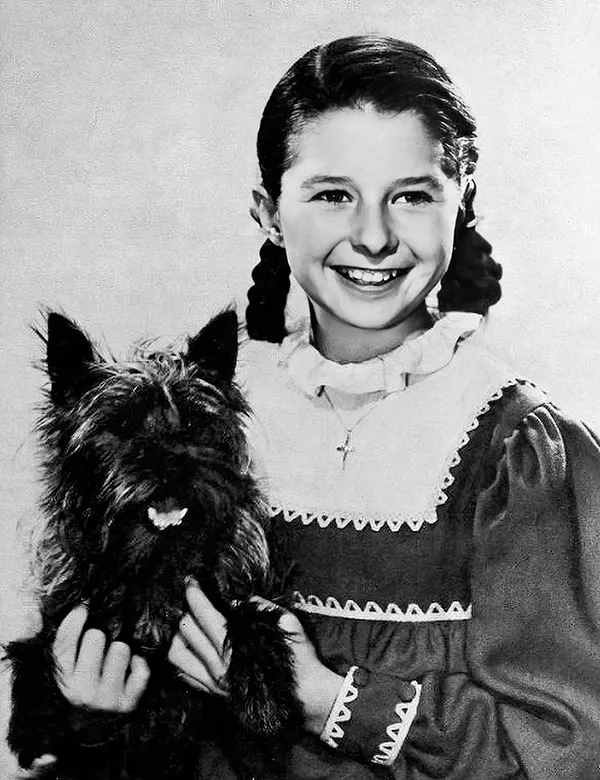
Terry’s stint as Toto wasn’t just about fame; she made some serious cash too, pulling in $125 a week. Adjusted for today’s dollars, that’s over $2,500—more than some human actors were making at the time!
Despite her success, Terry stayed down-to-earth. Although, she did have a funny quirk: whenever those wind machines started whirring on set, she’d scoot behind other actors for cover.
When Terry passed away at 11 in 1944, she left behind an impressive resume, having starred in a whopping 17 feature films. She’ll always be remembered as one of the brightest stars in cinema history.
Seaman: Dog Who Explored The American West With Lewis And Clark
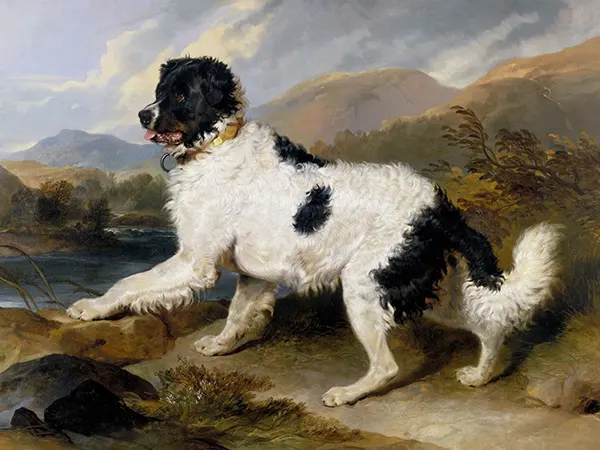
Seaman, a courageous Newfoundland dog, was part of the historic Lewis and Clark Expedition—the very first trek from the Mississippi River all the way to the Pacific coast and back.
What makes Seaman truly remarkable is that he’s the only animal to have made it through the entire three-year expedition.
Captain Meriwether Lewis made a special trip to Pittsburgh, Pennsylvania, in 1803 to get Seaman for the journey. He forked over a hefty $20 for him, which, back then, was half a month’s pay for an Army captain—equivalent to about $400 today.
Lewis specifically opted for a Newfoundland weighing in at a solid 150 pounds (68 kg) because of their strength and how easy they are to handle.
Describing Seaman as “docile,” Lewis knew Newfoundlands were perfect for the job. They were chosen for their knack for handling boats, swimming with ease, and being able to assist in water rescues.
While there aren’t precise descriptions of Seaman’s color or appearance, most pictures depict him as black or dark brown, similar to today’s Newfoundlands. Interestingly, historical paintings from that time reveal that all-black Newfoundlands were rare. Instead, they mostly showed white Newfoundlands with black or dark spots and freckles.
Buddy: The First American Seeing Eye Dog
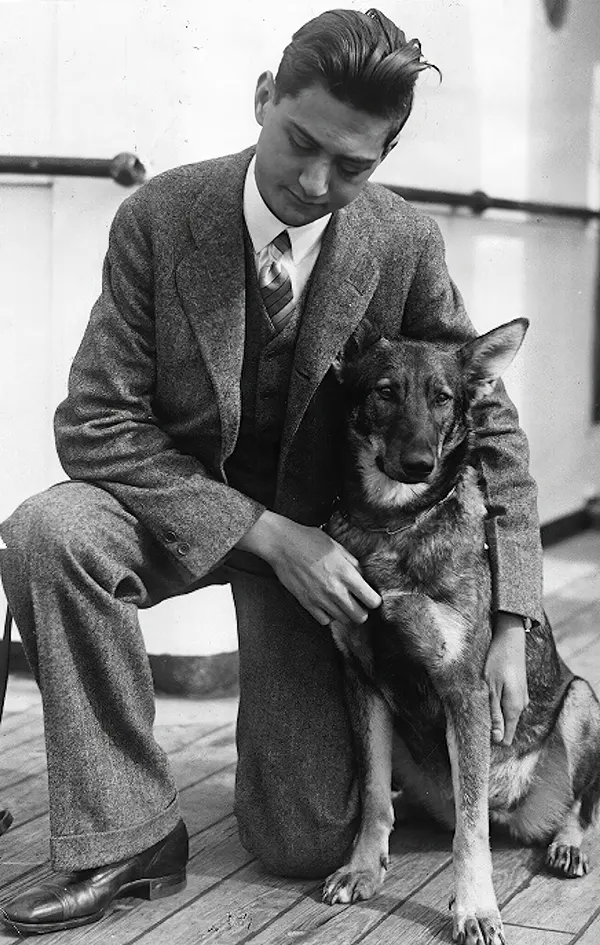
Morris Frank, a blind man, played an important role in introducing guide dogs to America, with his faithful companion Buddy becoming the country’s first seeing-eye dog.
The story began in 1927 when Frank, a 20-year-old student at Vanderbilt University, grew tired of relying on others for mobility.
Inspired by an article by Dorothy Eustis about guide dogs in Switzerland, Frank traveled to Europe to train with a specially bred dog.
After going through some intense training, Frank and Buddy made their way back to the States, and boy, did they make a splash.
Buddy’s talent for safely leading Frank through the bustling streets, especially when they showcased it in front of reporters in New York, grabbed the whole nation’s interest.
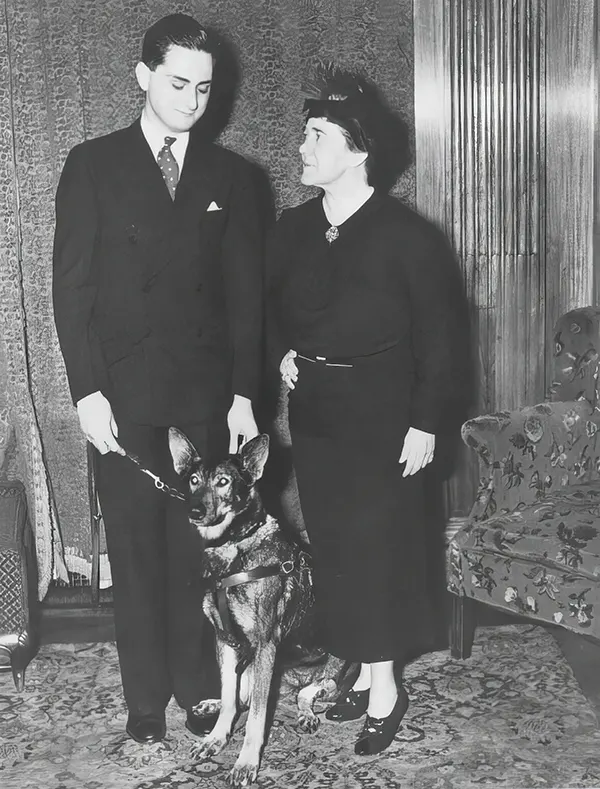
When Frank got back to Nashville, folks were amazed to see a blind man and his trusty dog navigating those busy sidewalks like pros.
Frank later wrote, “Now strangers spoke freely to me. In the old days, I often envied two sighted persons, who obviously did not know each other, their ease in striking up a conversation. With Buddy there, however, it was the easiest and most natural thing in the world for them to say, ‘What a lovely dog you have!'”
Buddy stayed a national hero for the rest of his days. When he passed away in May 1938, obituaries were published all across the country, honoring his remarkable life and service.
Zanjeer: The Indian Bomb-Sniffing Dog
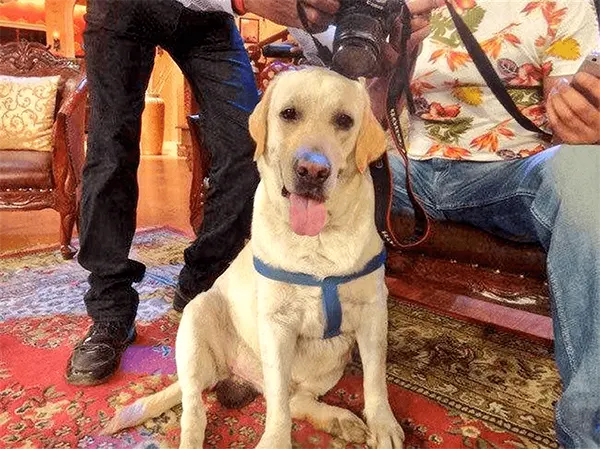
Zanjeer, a Labrador Retriever, worked as a detection dog alongside the Bombay Police (later Mumbai Police) in Maharashtra, India.
His service was truly remarkable, especially during the tragic events of the 1993 Bombay bombings. Zanjeer’s skills played a crucial role in helping law enforcement.
When he passed away on November 16, 2000, Zanjeer received a full state funeral as a tribute to his dedication and service to the community.
Zanjeer, born on January 7, 1992, got his name from the 1973 Hindi film “Zanjeer,” although folks also lovingly called him “Ginger” because of his coat color.
Beyond his bravery during the bombings, Zanjeer had a remarkable record. He sniffed out 11 military bombs, 57 homemade bombs, 175 petrol bombs, and 600 detonators, proving himself to be an incredibly skilled detection dog who took his job seriously.
(Photo credit: Wikimedia Commons / Britannica / Pinterest).

